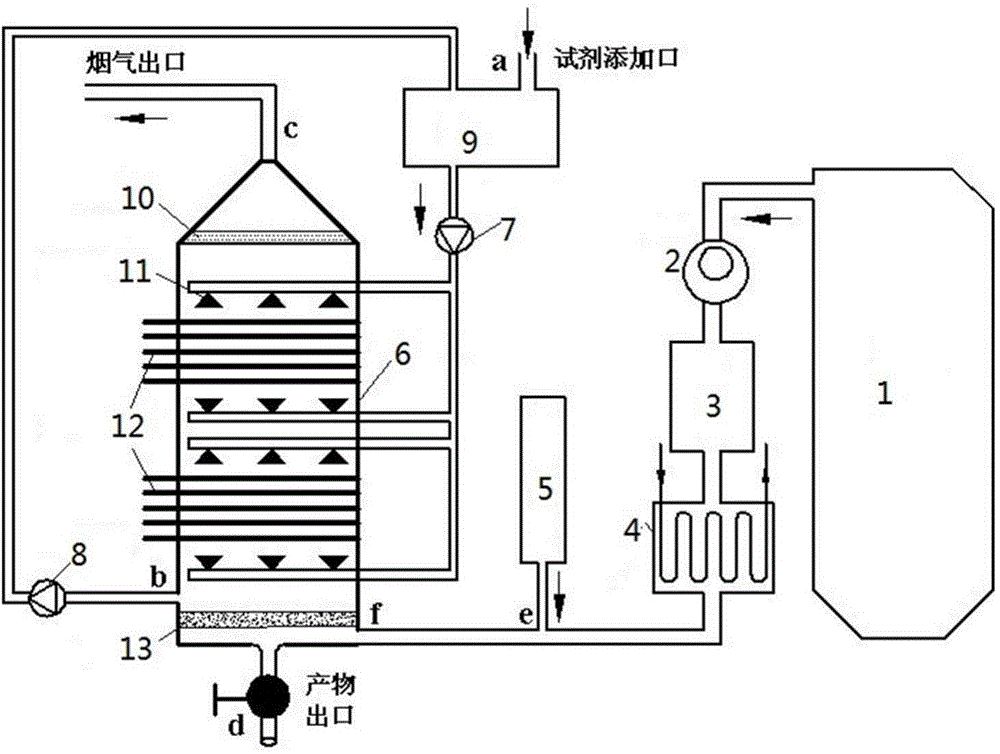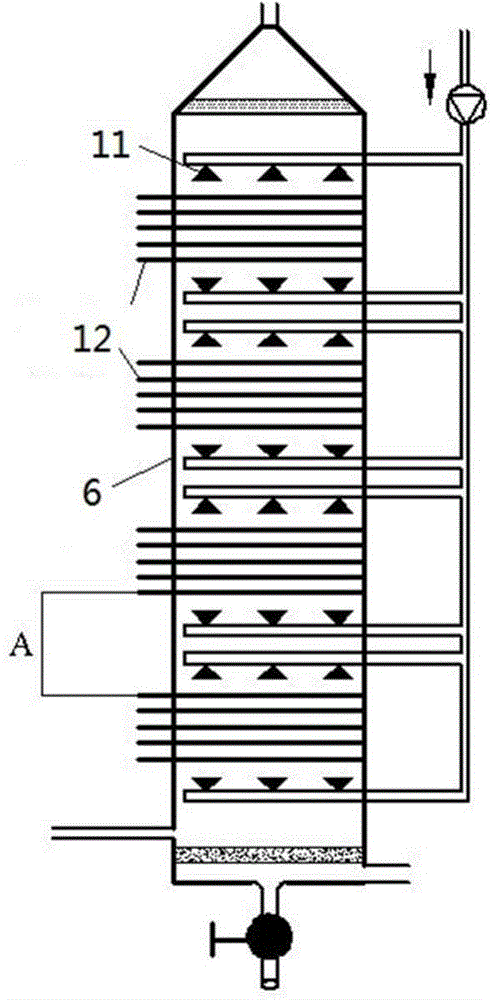Method for removing VOCs (volatile organic chemicals) by ozone and photolytic peroxide
A peroxide and ozone technology, applied in chemical instruments and methods, separation methods, dispersed particle separation, etc., can solve the problems of increasing loading and unloading, transportation, replacement and other work procedures, low ignition temperature, frequent replacement of activated carbon, etc. Broad application prospects, high-efficiency removal effect
- Summary
- Abstract
- Description
- Claims
- Application Information
AI Technical Summary
Problems solved by technology
Method used
Image
Examples
Embodiment 1
[0049] Example 1. Toluene content in flue gas is 400mg / m 3 , The flue gas inlet temperature of the upper and lower spraying bed is 55℃, and the liquid-gas ratio is 1.0L / m 3 , The concentration of hydrogen peroxide is 1.0mol / L, the pH of the solution is 3.5, the temperature of the solution is 50℃, and the effective radiation intensity of ultraviolet light is 40μW / cm 2 , The effective wavelength of ultraviolet light is 254nm. The result of the small test is: the removal efficiency of toluene in the flue gas is 71.5%.
Embodiment 2
[0050] Example 2. Toluene content in flue gas is 400mg / m 3 , The flue gas inlet temperature of the upper and lower spraying bed is 55℃, and the liquid-gas ratio is 1.0L / m 3 , The concentration of ammonium persulfate is 1.0mol / L, the pH of the solution is 3.5, the temperature of the solution is 50℃, and the effective radiation intensity of ultraviolet light is 40μW / cm 2 , The effective wavelength of ultraviolet light is 254nm. The result of the small test: the removal efficiency of toluene in the flue gas is 67.9%.
Embodiment 3
[0051] Example 3. Toluene content in flue gas is 200mg / m 3 , The flue gas inlet temperature of the upper and lower spraying bed is 55℃, and the liquid-gas ratio is 1.0L / m 3 , The concentration of hydrogen peroxide is 1.0mol / L, the pH of the solution is 3.5, the temperature of the solution is 50℃, and the effective radiation intensity of ultraviolet light is 40μW / cm 2 , The effective wavelength of ultraviolet light is 254nm. The result of the small test is: the removal efficiency of toluene in the flue gas is 88.8%.
PUM
 Login to View More
Login to View More Abstract
Description
Claims
Application Information
 Login to View More
Login to View More - R&D
- Intellectual Property
- Life Sciences
- Materials
- Tech Scout
- Unparalleled Data Quality
- Higher Quality Content
- 60% Fewer Hallucinations
Browse by: Latest US Patents, China's latest patents, Technical Efficacy Thesaurus, Application Domain, Technology Topic, Popular Technical Reports.
© 2025 PatSnap. All rights reserved.Legal|Privacy policy|Modern Slavery Act Transparency Statement|Sitemap|About US| Contact US: help@patsnap.com



